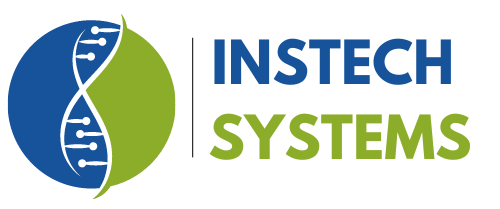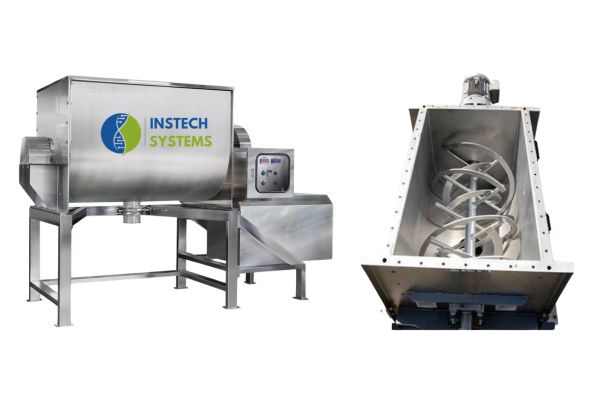Ribbon Blender Working Principle
Ribbon blenders use a rotating agitator with helical ribbons to create a convective mixing pattern, moving materials both axially and radially within a U-shaped trough for efficient and thorough blending of powders and bulk solids. The mixing medium often consists of inner and outer helical ribbons that are designed to move material both inwards and outwards. The external helical ribbons pull product from the sides of the mixer into the middle and the internal ribbons push the product back to the sides. The back-and-forth folding motion of the materials to be blended creates a convective mixing pattern.
What is a Ribbon Blender?
A ribbon blender is a type of industrial mixer designed to combine dry powders, granules, and sometimes pastes in a homogeneous mixture. The equipment consists of a U-shaped trough and a helical ribbon agitator that rotates around a central shaft. As the ribbon rotates, it moves the materials in a gentle, consistent manner, ensuring thorough mixing.
Understanding Ribbon Blenders: Features, Advantages, and Working Principles
Ribbon Blenders are versatile mixing machines widely used in various industries, including food, pharmaceuticals, and chemicals. Known for their ability to blend dry powders and granules efficiently, ribbon blenders offer several advantages and a few disadvantages. In this blog, we’ll explore what ribbon blenders are, their advantages and disadvantages, and the working principle behind them.
Advantages of Ribbon Blenders
Efficient Mixing: Ribbon blenders are designed for homogeneous blending of materials, ensuring that every particle is evenly distributed.
Versatility: They can mix a wide range of materials, including powders, granules, and even some liquids, making them suitable for various applications.
Gentle Mixing Action: The design minimizes the risk of damaging fragile materials, making it ideal for applications involving delicate powders.
Easy to Clean: The simple construction and smooth surfaces allow for quick cleaning, which is essential in industries requiring strict hygiene standards.
Customizable Sizes: Ribbon blenders come in various sizes, from small laboratory models to large industrial units, accommodating different production needs.
Disadvantages of Ribbon Blenders
Limited Mixing Time: While ribbon blenders are efficient, they may require longer mixing times for achieving the desired homogeneity compared to other types of mixers.
Potential for Segregation: In cases where the materials have significantly different particle sizes or densities, there is a risk of segregation during the mixing process.
Not Suitable for Heavy Liquids: Ribbon blenders are primarily designed for dry materials and may struggle with mixing heavy liquids or pastes effectively.
Wear and Tear: Over time, the ribbon and trough can wear down, requiring maintenance or replacement, which can lead to downtime.
Power Consumption: Depending on the design and size, ribbon blenders can consume a considerable amount of energy, especially in large-scale operations.
Working Principle of Ribbon Blenders
The operation of a ribbon blender is based on a straightforward yet effective mixing principle:
Material Loading: The materials to be mixed are loaded into the U-shaped trough through a feed inlet.
Agitator Rotation: The motor powers the helical ribbon agitator, which rotates around the central shaft. The ribbon’s design consists of two blades that push the materials in opposite directions.
Material Movement: As the ribbon rotates, it creates a continuous flow of materials. The outer ribbon moves the materials from the sides to the center, while the inner ribbon pushes them from the center to the sides. This dual action promotes uniform mixing.
Discharge: Once the desired mixing is achieved, the mixed product is discharged through a gate or outlet at the bottom of the trough.
Repeat Process: The process can be repeated for continuous production, with materials being fed and discharged as needed.
Conclusion
Ribbon blenders are an essential piece of equipment in many industries, known for their efficient mixing capabilities and versatility. While they have some disadvantages, their advantages often outweigh the drawbacks, especially when it comes to blending dry powders and granules. Understanding the working principle and applications of ribbon blenders can help businesses make informed decisions about their mixing needs, ultimately leading to improved product quality and operational efficiency. Whether you’re in the food, pharmaceutical, or chemical industry, a ribbon blender may be the right solution for your mixing challenges.

